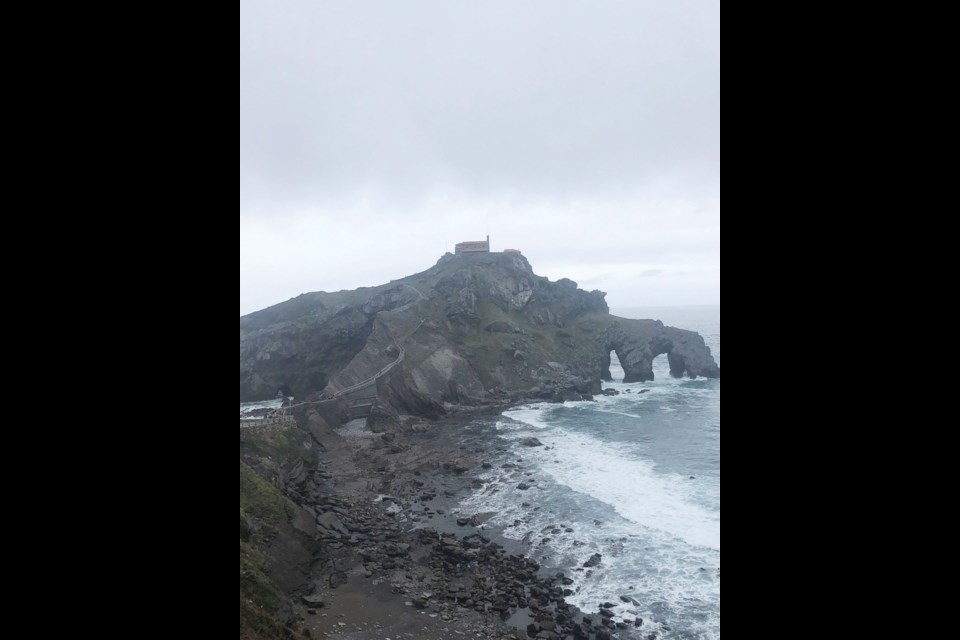A howling wind swirls overhead as waves crash from all directions onto this rocky islet in the Bay of Biscay in northern Spain’s Basque Country.
Dark clouds are foreboding and heavy with the impending rain. As we walk up a meandering stone staircase, I picture dragons flapping overhead and a platinum-haired Queen standing stone-faced in the castle above. That’s because the first time I saw this place was in Game of Thrones, the HBO series based on George R.R. Martin’s fantasy tomes that has become a cult classic. The final season of the series debuts on Sunday.
San Juan de Gaztelugatxe, which translates to “craggy fort” in Basque, was the setting of Dragonstone, the fortress of Daenerys Targaryen, the show’s heroine and Mother of Dragons. The impressive stone castle from which fire-breathing dragons took flight was superimposed for the television show, but the 240 steps that zigzag up to the 10th-century monastery are real, and we’re climbing them one at a time, following in the footsteps of Catholic monks, or Jon Snow, whichever you prefer.
The step’s sandstone barriers are marked with 14 simple black crosses, the stations of the cross that reflect the fact that, before it was a tourist attraction, the walk was a religious pilgrimage. Once you reach the monastery, perched 80 metres above sea level, it’s customary to ring the church bell three times and make a wish.
On this chilly March day, there aren’t more than two dozen people climbing or descending at one time, a relative solitude compared with many popular tourist destinations, especially ones featured in pop culture. The parking lot at the top of the hill is surprisingly small and there’s no entry fee to climb the steps, suggesting San Juan de Gaztelugatxe is still quite off the beaten track for many travellers.
For me and my husband, it was a one-hour-and-45-minute drive from San Sebastián, where we spent four days in March.
The climb got our hearts pumping, but the view from the top, of the switch back stone path and the narrow arched bridge that connects the islet to the mainland, was worth it.
It was also a good way to work off three days worth of non-stop snacking on pintxos, the tapas-style, three-bite delicacies that line the bar of most restaurants in San Sebastián’s old town.
As we started the walk back down toward the sea, a mist began to dampen our hair and clothes. Looking back on the islet, a thick fog rolled in, swallowing up the stone staircase, obscuring the monastery and allowing me once again to imagine that, in this magical place, here be dragons.



